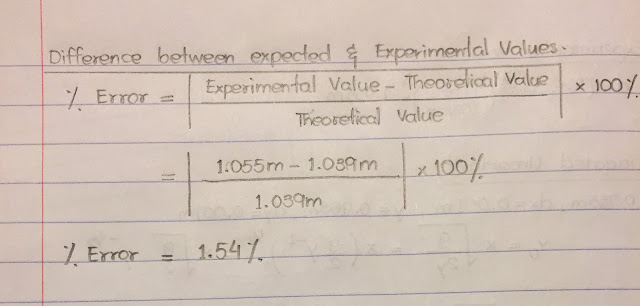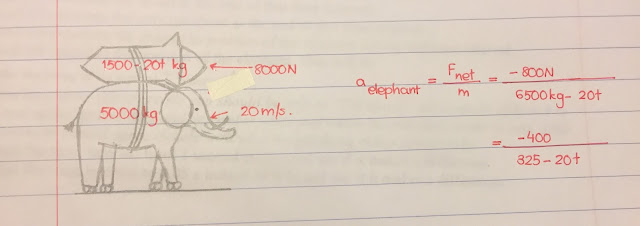May Soe Moe
Lab Partners: Ben Chen, Steven Castro
15-March-2017
Objective: To predict where the ball that was launched from the top of an inclined board would land.
Introduction: The velocity of the objects in projectile motions are calculated separately. We calculate its velocity in x-direction and velocity in y-direction. We knew that the x-velocity and y-velocity are independent of each other and the only relationship between them is time. By finding the time, we can know the position and velocity of the object regardless of being in x or y direction.
Experimental Procedure:
(1) Set up the apparatus as below:
(2) We placed a carbon copy to the floor where we thought the ball would land. We confirmed where it would impact by launching the steel ball as a trial. Then we taped the carbon copy to secure it so that it is not moved by the ball at the time of impact.
(3) We launched the ball five times from the same launching point. We verified that the ball landed in almost exactly the same place for each time.
(4) We measured the height of the table+ the height of the block that was put in between the table and the aluminum b-channel. We also measured the distance from the table's edge to the landed position. The measurements were: h=96.3+/-0.1cm or 0.963 +/- 0.001 m, and x=75.5+/-0.1 cm or 0.755 +/- 0.001 m.
 |
| The height of the table+ The height from table to the v-channel |
 |
| The horizontal distance from the edge of the table |
(7) We measured the landed distance. We calculated the theoretical distance from the known angle 49 degree and previously calculated launching speed.
 |
| Calculation of where the ball landed |
(8) Once we got the theoretical and experimental values, we calculated the uncertainties of the launching speed, angle, and the distance.
(9) The launched speed was 1.704+/- 0.028 m/s and the distance along the inclined board was 1.055+/-0.331 m.
(10) I calculated the error percentage and it came out to be 1.54%, which is within acceptable range.

















































